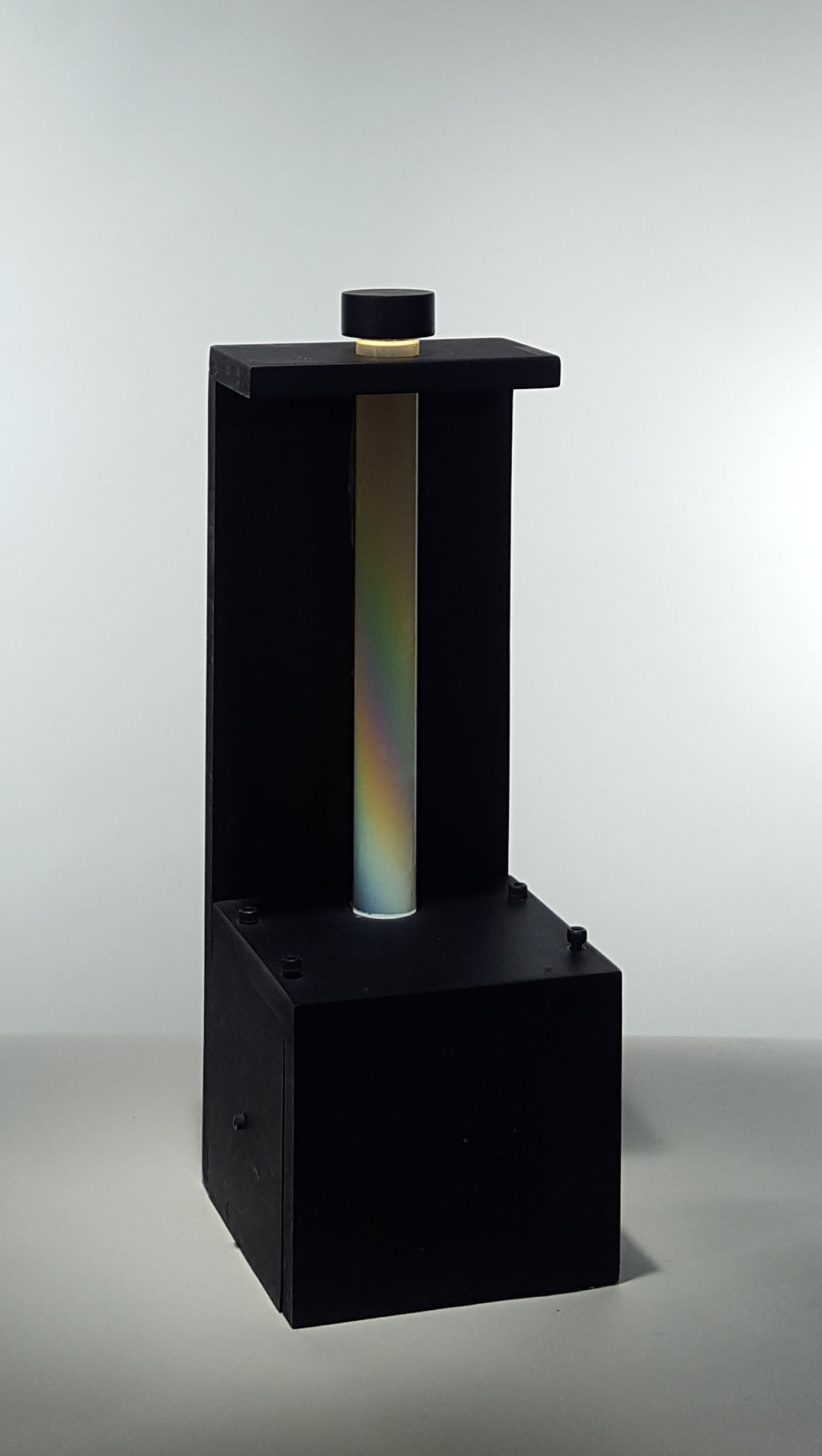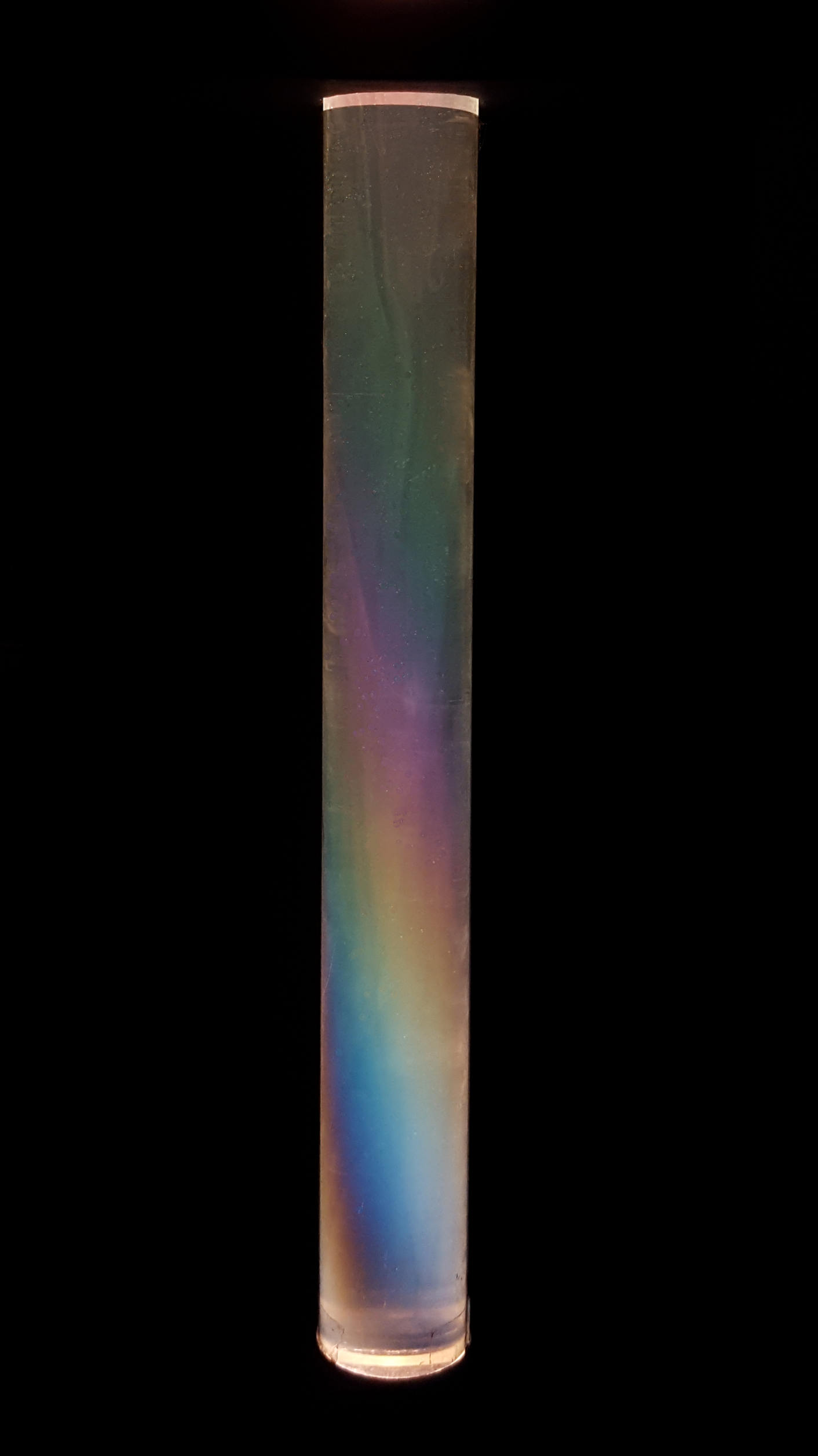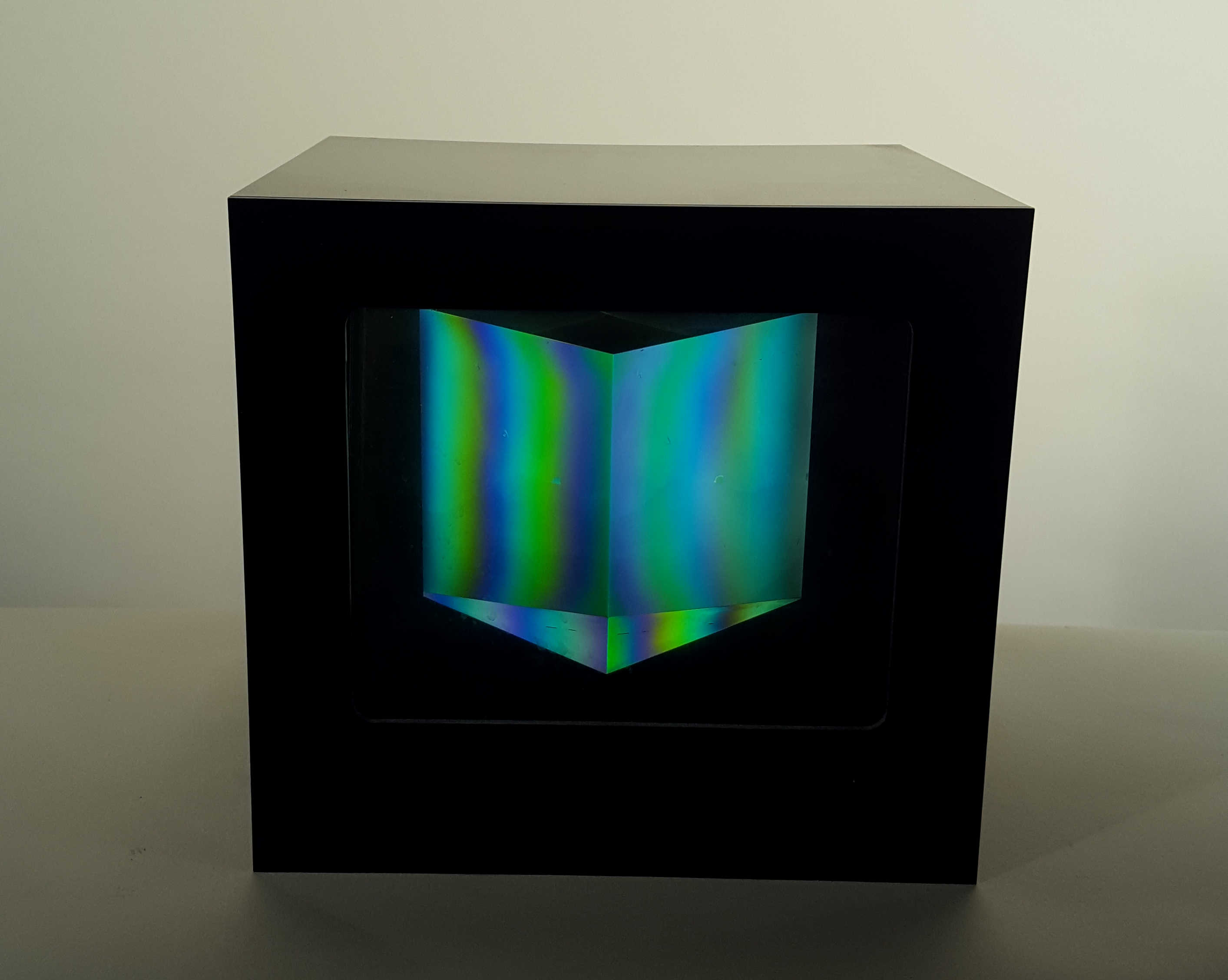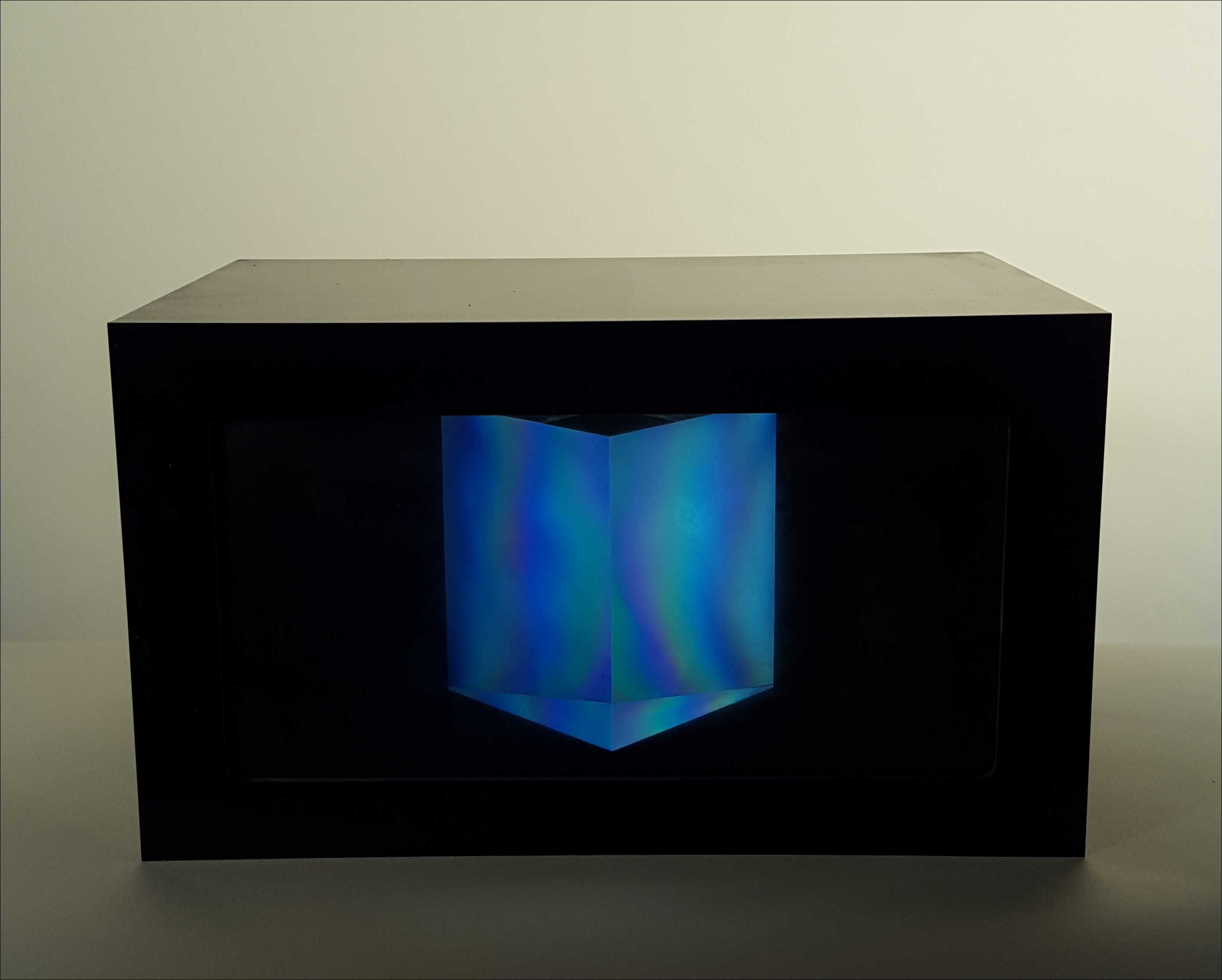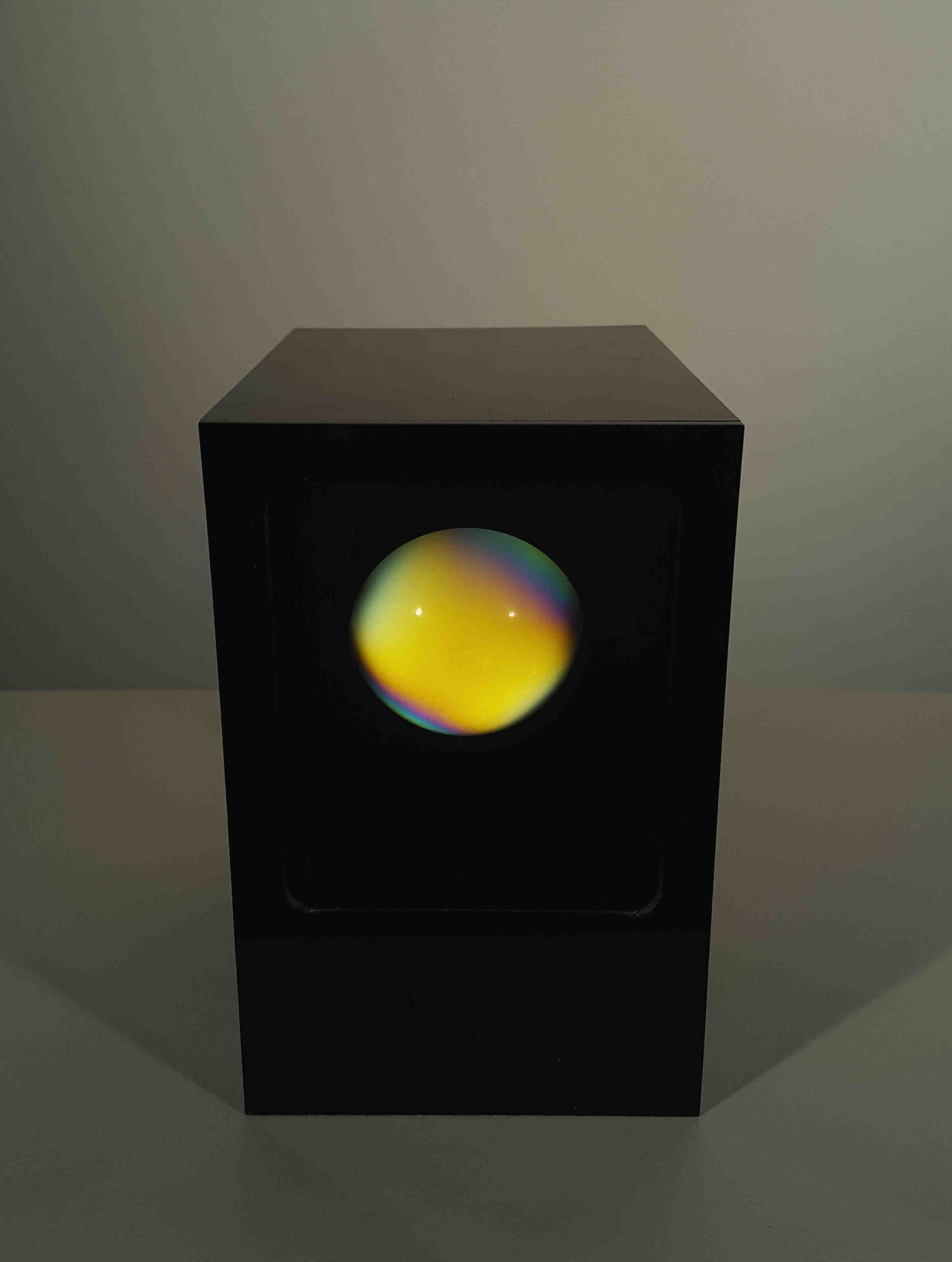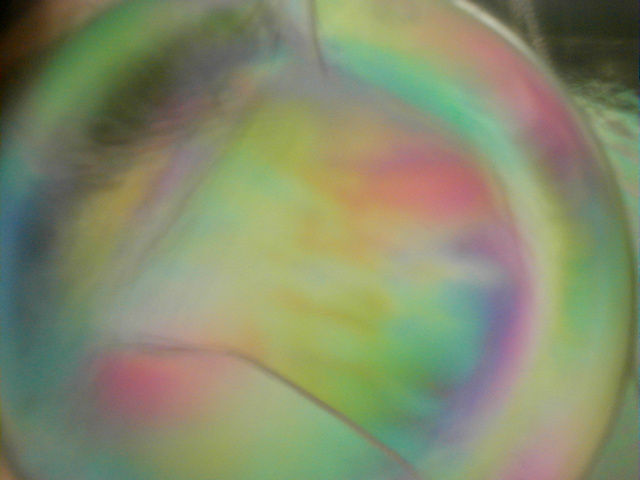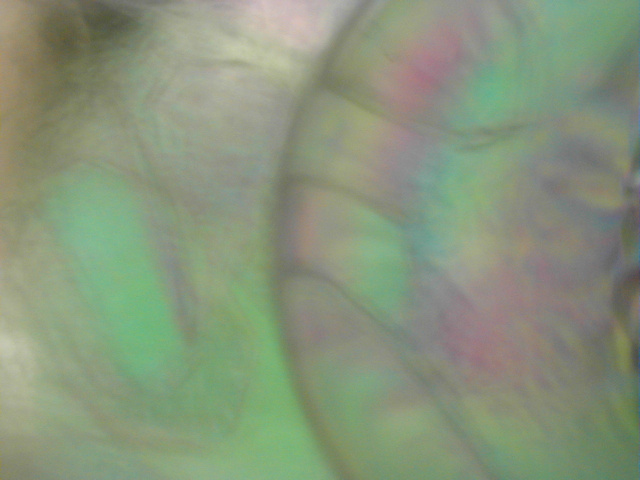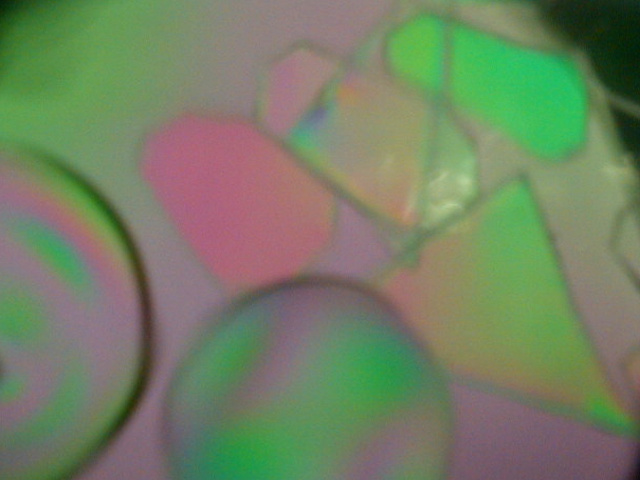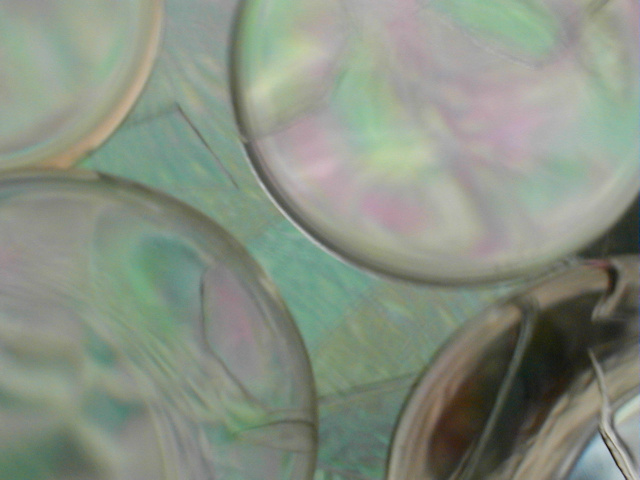Gary Fisher
Birefringence Studies
This series evolved in the 1980s when I was looking for artistic applications of polarization phenomena exploiting the use of birefringent materials and liquids to generate static and dynamic visual displays. My early works (not shown) consisted of plastics of various shapes cyclically stressed by mechanical means (cams, motors).
Two of the pieces below are static ("Stressed Prism 1", "Stressed Prism 2"); two are dynamic. "Rotating Cylindrical Field" employs a birefringent liquid suspension and a rotating polarizer to generate a moving barber pole effect. In "Rotating Stressed Sphere" a heat stressed and rapidly cooled acrylic sphere rotates on a random motion mechanism to display a constantly changing view of its internal stress patterns.
Two of the pieces below are static ("Stressed Prism 1", "Stressed Prism 2"); two are dynamic. "Rotating Cylindrical Field" employs a birefringent liquid suspension and a rotating polarizer to generate a moving barber pole effect. In "Rotating Stressed Sphere" a heat stressed and rapidly cooled acrylic sphere rotates on a random motion mechanism to display a constantly changing view of its internal stress patterns.
© 2017 - 2025 Gary Fisher
In 1998 I designed an apparatus that would continuously circulate a number of pre-stressed birefringent shapes in a diffusely illuminated water-filled vessel. Polarizers made the instantaneous patterns visible to a webcam positioned above the vessel. For a few months images recorded by the webcam were randomly uploaded to the internet and displayed on the armchair.com website. The overall envelope of potential images were a function of my choice of materials, their shapes, sizes, and degree of internal stress, and the water flow dynamics I designed into the apparatus. There was purposely no intelligence behind the choice of which images the webcam would upload. Conceptually, I was interested in whether the artistic content was in the conception, the realization, the images generated and randomly chosen to display, or a combination of all three.
